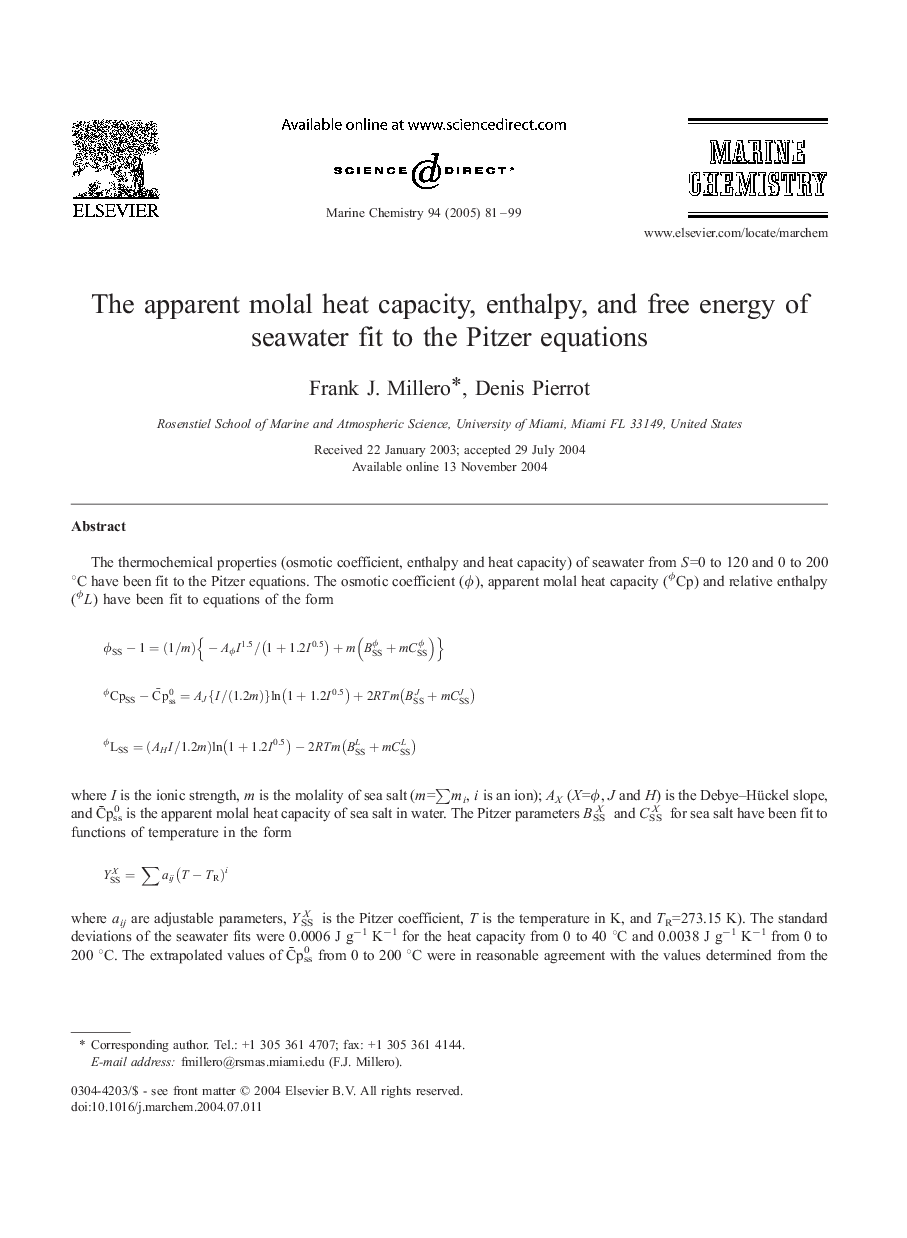| Article ID | Journal | Published Year | Pages | File Type |
|---|---|---|---|---|
| 9758409 | Marine Chemistry | 2005 | 19 Pages |
Abstract
The thermochemical properties (osmotic coefficient, enthalpy and heat capacity) of seawater from S=0 to 120 and 0 to 200 °C have been fit to the Pitzer equations. The osmotic coefficient (Ï), apparent molal heat capacity (ÏCp) and relative enthalpy (ÏL) have been fit to equations of the formÏSSâ1=(1/m){âAÏI1.5/(1+1.2I0.5)+m(BSSÏ+mCSSÏ)}CpÏSSâC¯â¢pss0=AJ{I/(1.2â¢m)}ln(1+1.2I0.5)+2â¢Râ¢Tâ¢m(BSSJ+mCSSJ)LÏSS=(AHI/1.2â¢m)ln(1+1.2I0.5)â2â¢Râ¢Tâ¢m(BSSL+mCSSL)where I is the ionic strength, m is the molality of sea salt (m=âmi, i is an ion); AX (X=Ï, J and H) is the Debye-Hückel slope, and C¯pss0 is the apparent molal heat capacity of sea salt in water. The Pitzer parameters BSSX and CSSX for sea salt have been fit to functions of temperature in the formYSSX=âaiâ¢j(TâTR)iwhere aij are adjustable parameters, YSSX is the Pitzer coefficient, T is the temperature in K, and TR=273.15 K). The standard deviations of the seawater fits were 0.0006 J gâ1 Kâ1 for the heat capacity from 0 to 40 °C and 0.0038 J gâ1 Kâ1 from 0 to 200 °C. The extrapolated values of C¯pss0 from 0 to 200 °C were in reasonable agreement with the values determined from the major sea salts. The combined cp data have been fit to equations that are consistent with the theoretical values of C¯pss0. By appropriate integration of ÏCpSS, the apparent molal enthalpy at 298 K and osmotic coefficients at 273 K, equations were determined for all the thermochemical properties as a function of ionic strength and temperature. The thermochemical properties determined in this manner are in good agreement with direct measurements at different salinities and temperatures. The equations can be used to determine all the thermochemical properties of seawater from 0 to 200 °C and I=0 to 2.4 (S=120).
Related Topics
Physical Sciences and Engineering
Chemistry
Chemistry (General)
Authors
Frank J. Millero, Denis Pierrot,
